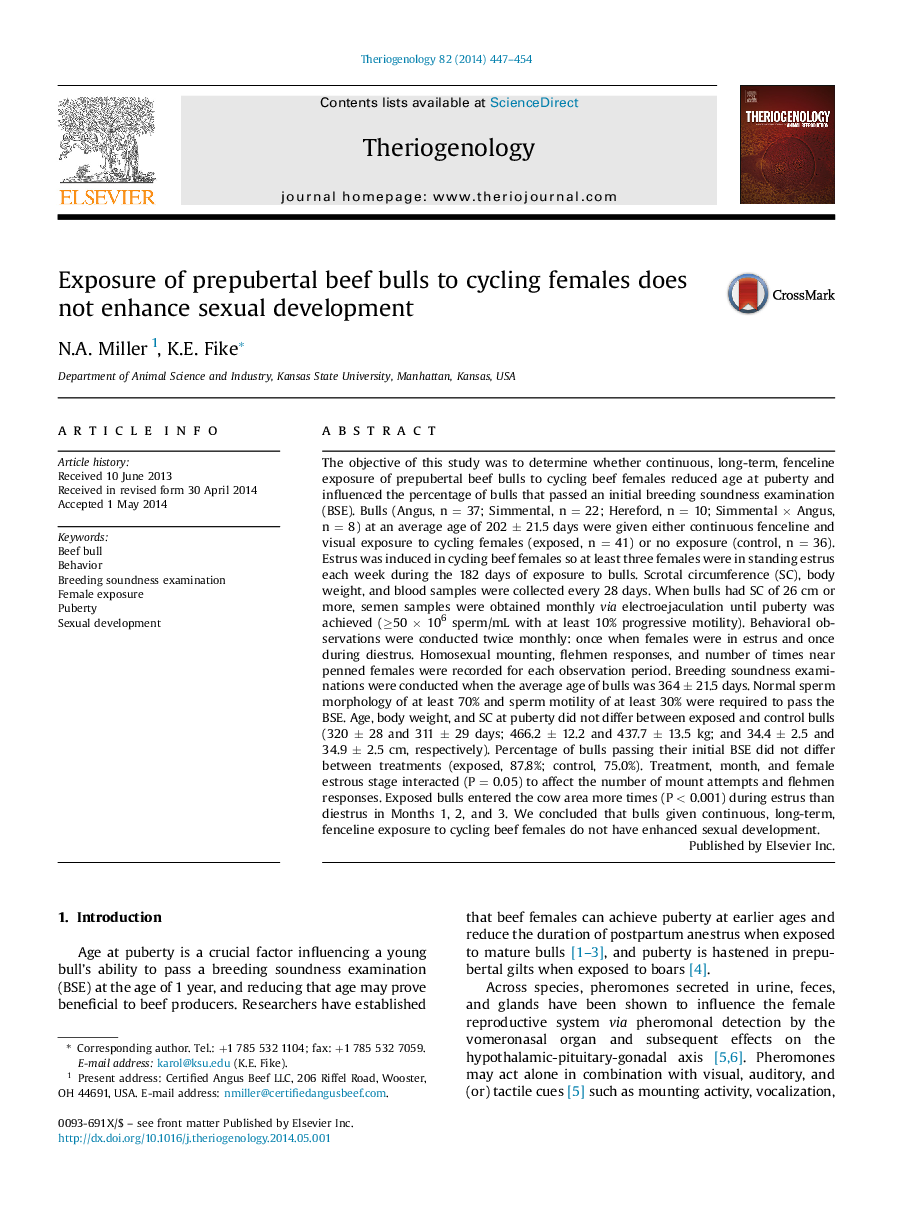| Article ID | Journal | Published Year | Pages | File Type |
|---|---|---|---|---|
| 2095093 | Theriogenology | 2014 | 8 Pages |
The objective of this study was to determine whether continuous, long-term, fenceline exposure of prepubertal beef bulls to cycling beef females reduced age at puberty and influenced the percentage of bulls that passed an initial breeding soundness examination (BSE). Bulls (Angus, n = 37; Simmental, n = 22; Hereford, n = 10; Simmental × Angus, n = 8) at an average age of 202 ± 21.5 days were given either continuous fenceline and visual exposure to cycling females (exposed, n = 41) or no exposure (control, n = 36). Estrus was induced in cycling beef females so at least three females were in standing estrus each week during the 182 days of exposure to bulls. Scrotal circumference (SC), body weight, and blood samples were collected every 28 days. When bulls had SC of 26 cm or more, semen samples were obtained monthly via electroejaculation until puberty was achieved (≥50 × 106 sperm/mL with at least 10% progressive motility). Behavioral observations were conducted twice monthly: once when females were in estrus and once during diestrus. Homosexual mounting, flehmen responses, and number of times near penned females were recorded for each observation period. Breeding soundness examinations were conducted when the average age of bulls was 364 ± 21.5 days. Normal sperm morphology of at least 70% and sperm motility of at least 30% were required to pass the BSE. Age, body weight, and SC at puberty did not differ between exposed and control bulls (320 ± 28 and 311 ± 29 days; 466.2 ± 12.2 and 437.7 ± 13.5 kg; and 34.4 ± 2.5 and 34.9 ± 2.5 cm, respectively). Percentage of bulls passing their initial BSE did not differ between treatments (exposed, 87.8%; control, 75.0%). Treatment, month, and female estrous stage interacted (P = 0.05) to affect the number of mount attempts and flehmen responses. Exposed bulls entered the cow area more times (P < 0.001) during estrus than diestrus in Months 1, 2, and 3. We concluded that bulls given continuous, long-term, fenceline exposure to cycling beef females do not have enhanced sexual development.
